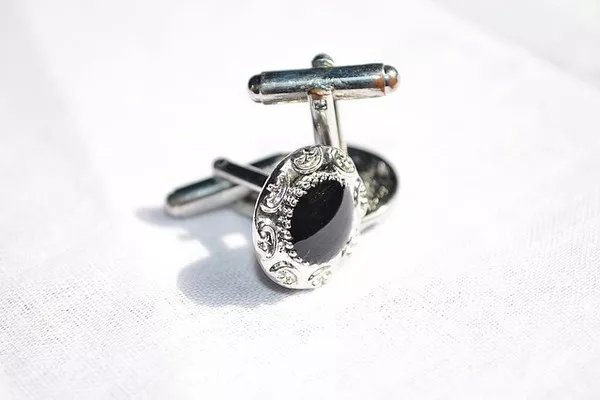Silver has been cherished for millennia as both a monetary metal and a store of value. Its historical significance dates back to ancient civilizations, where it was used as currency and adorned luxury items. Today, silver continues to hold its allure as a precious metal with intrinsic value. Investors turn to silver for its role as a hedge against economic uncertainty, inflation, and currency devaluation. With its industrial applications and limited supply, silver remains a compelling investment choice in modern portfolios.
Advantages of Buying Silver Bars
Investing in silver bars offers numerous advantages for investors seeking diversification and wealth preservation. Firstly, silver bars provide a tangible asset that can be held directly, offering a sense of security and ownership. Unlike stocks or bonds, silver bars are not subject to the risks of default or bankruptcy. Additionally, silver serves as a hedge against inflation, as its value tends to rise during periods of currency depreciation. Moreover, silver has the potential for long-term appreciation, driven by increasing industrial demand and limited mine supply.
Physical Silver vs. Paper Silver
One of the key distinctions in silver investment is between owning physical silver bars and paper silver investments such as Exchange-Traded Funds (ETFs). While ETFs offer convenience and liquidity, they do not provide direct ownership of the underlying metal. In contrast, owning physical silver bars ensures full control and ownership, eliminating counterparty risk associated with paper investments. Furthermore, physical silver allows for customization in terms of size and purity, catering to individual investment preferences.
Silver Bars vs. Coins
When considering silver investments, investors often debate between bars and coins. While both offer exposure to the silver market, there are notable differences to consider. Silver bars typically have lower premiums over the spot price compared to coins, making them a cost-effective option for bulk investments. Moreover, bars are easier to stack and store efficiently due to their uniform shape and size. However, silver coins may offer greater liquidity and collector value, appealing to numismatic enthusiasts. Ultimately, the choice between bars and coins depends on individual investment goals and preferences.
Purity and Value
The purity of silver bars is a critical factor that influences their value and authenticity. Most silver bars are stamped with their purity level, usually expressed as a percentage (e.g., .999 fine silver). Higher purity bars command a premium due to their superior quality and market acceptance. Investors should verify the authenticity of silver bars through reputable dealers or third-party authentication services. Additionally, reputable mints and refineries adhere to strict quality standards, ensuring the integrity of their products.
Storage Solutions
Proper storage is essential for safeguarding silver bars and protecting their long-term value. Investors have several options for storing physical silver, ranging from home storage to third-party vaults. Home storage offers immediate access to the metal but carries risks such as theft and damage. Alternatively, third-party vaults provide secure storage facilities with insurance coverage, offering peace of mind for investors. Regardless of the chosen storage method, precautions should be taken to minimize exposure to environmental factors and theft.
Buying Tips
When purchasing silver bars, it is crucial to exercise caution and diligence to ensure a smooth transaction. Firstly, investors should choose reputable dealers with a track record of integrity and reliability. Researching dealer reviews and certifications can help identify trustworthy suppliers. Additionally, understanding pricing dynamics, including premiums over spot prices and shipping costs, is essential for making informed decisions. Finally, buyers should inspect the physical condition of silver bars upon receipt to verify authenticity and quality.
Market Analysis
Analyzing the silver market provides insights into trends and factors influencing prices, aiding investors in making informed decisions. Silver prices are influenced by various factors, including industrial demand, geopolitical events, and macroeconomic trends. Industrial applications, particularly in electronics and renewable energy, drive significant demand for silver. Moreover, investor sentiment and speculative activity contribute to short-term price fluctuations. Keeping abreast of market developments and macroeconomic indicators can help investors anticipate price movements and adjust their strategies accordingly.
Risks and Considerations
Despite its allure, investing in silver bars carries certain risks and considerations that investors should be aware of. Firstly, silver prices are subject to volatility, which can lead to substantial fluctuations in portfolio value. Additionally, silver investments lack income generation, unlike dividend-paying stocks or interest-bearing bonds. Furthermore, storage and insurance costs should be factored into the overall investment expenses. Lastly, counterfeiting remains a concern in the precious metals market, highlighting the importance of purchasing from reputable sources and verifying authenticity.
See Also Why Did Silver Go Down? Factors at Play
Conclusion
Investing in silver bars offers numerous advantages for investors seeking portfolio diversification and wealth preservation. With its historical significance, intrinsic value, and industrial applications, silver remains a compelling asset in modern investment portfolios. By understanding the advantages, risks, and considerations associated with silver investments, investors can make informed decisions to achieve their financial goals. Whether as a hedge against inflation or a long-term store of value, silver bars play a valuable role in diversifying and protecting wealth.


